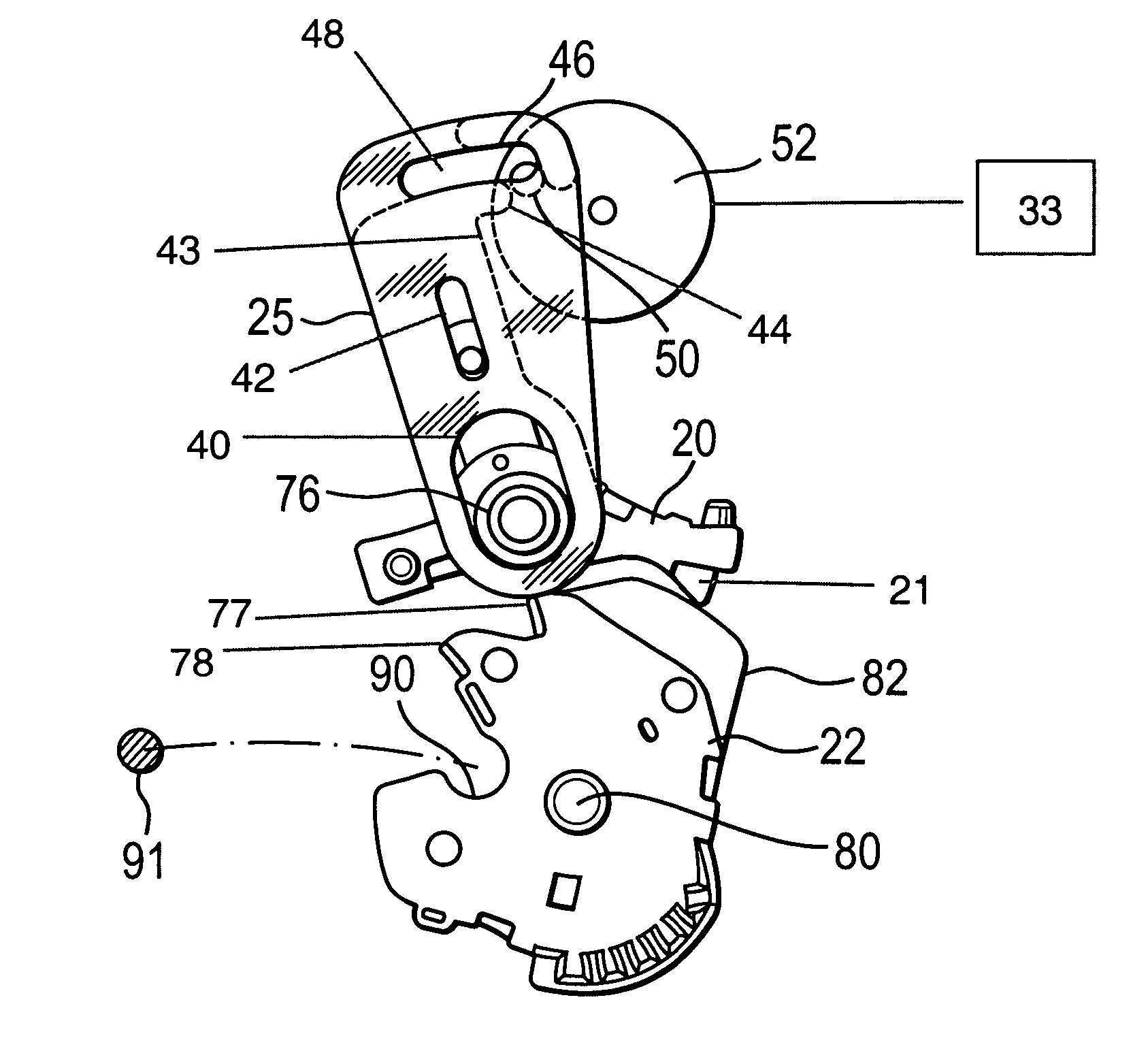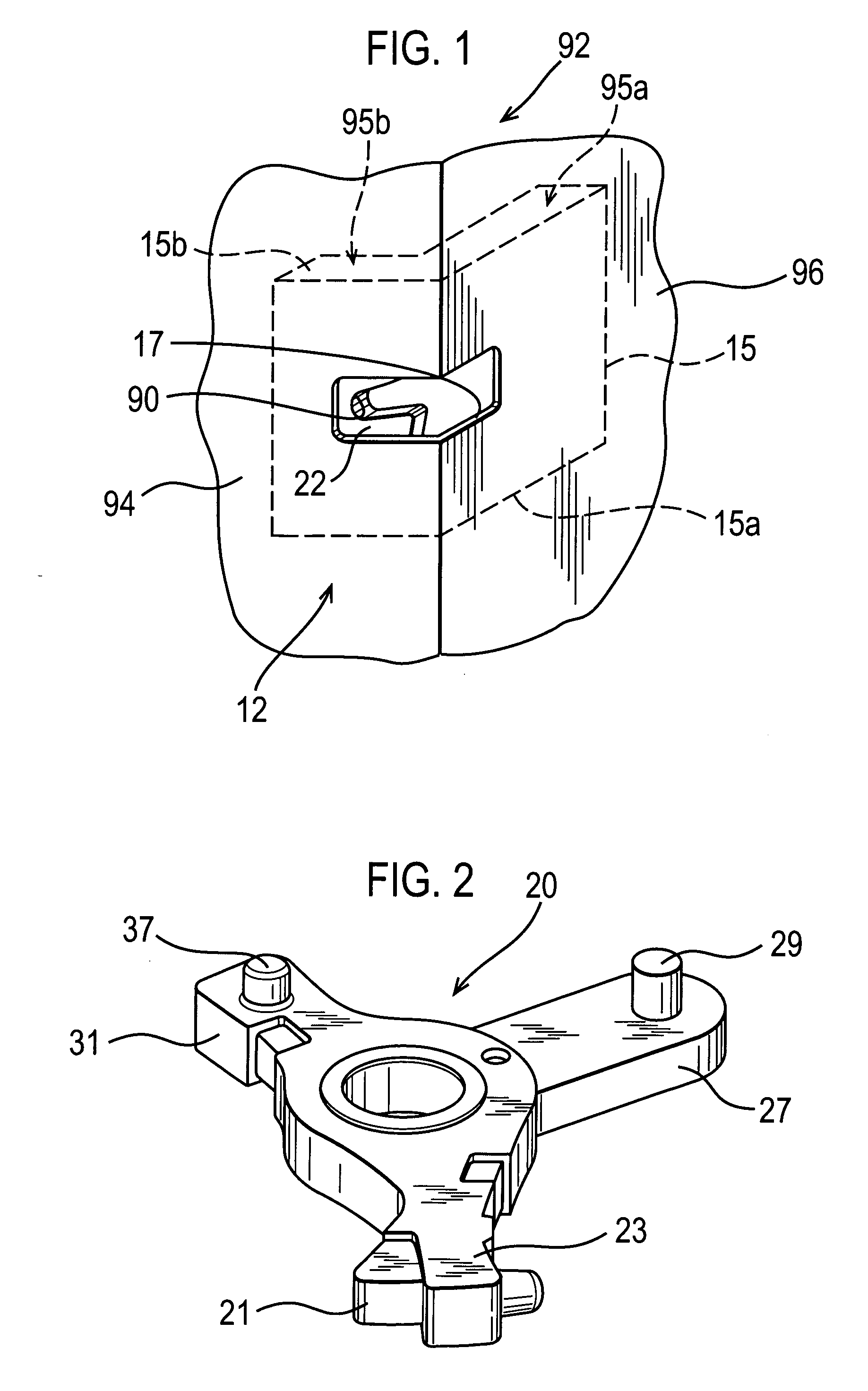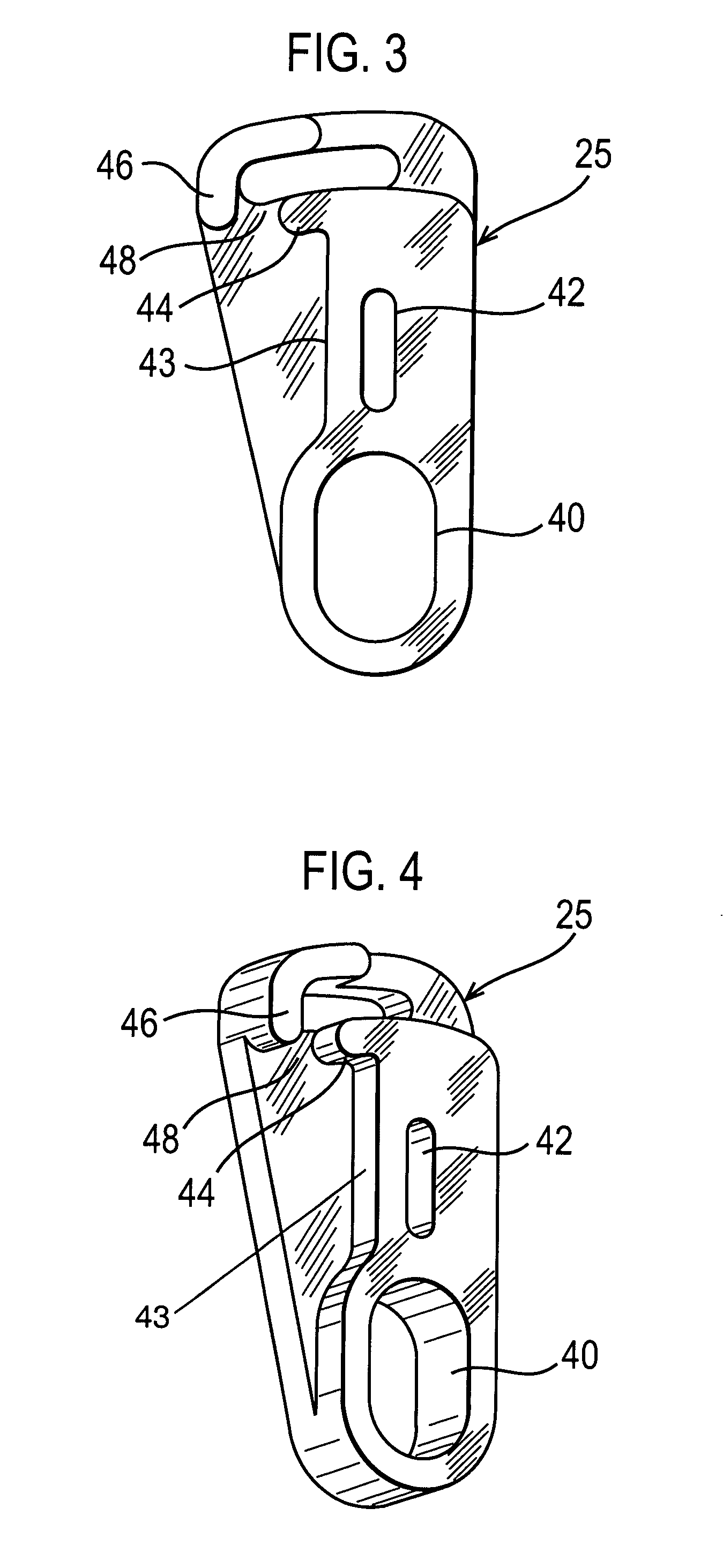Power release mechanism
a technology of power release mechanism and power supply, which is applied in the direction of mechanical devices, fastening means, and application of locking devices, etc., can solve the problems of increasing costs, increasing costs, and not directly providing energy by the vehicle user, and stepper motors are still more expensive than a standard dc electric motor
- Summary
- Abstract
- Description
- Claims
- Application Information
AI Technical Summary
Benefits of technology
Problems solved by technology
Method used
Image
Examples
Embodiment Construction
[0020]FIGS. 1 and 5 illustrate a latch 12 for a vehicle closure, in this instance a vehicle side passenger door, including a retention plate 15 having an opening 17 (shown in FIG. 1) therein to receive a striker 91 (shown in FIGS. 6A-6D). In FIG. 5, mechanical interconnections are illustrated by arrows with unbroken lines, and electrical connections are illustrated by arrows with broken lines.
[0021] As shown in FIG. 1, the retention plate 15 includes two portions: a shut face portion 15b that is arranged to be substantially parallel to a shut face 94 (the face on a trailing edge of a conventional passenger side door) of a door 92 to which the latch 12 is to be fitted and an inside face portion 15a arranged substantially 90 degrees to the shut face portion 15b and substantially parallel to an inner face 96 of the door 92 to which the latch 12 is to be fitted. The opening 17 spans the intersection of the portions 15a and 15b. The inside face portion 15a and the shut face portion 15b ...
PUM
 Login to View More
Login to View More Abstract
Description
Claims
Application Information
 Login to View More
Login to View More - R&D
- Intellectual Property
- Life Sciences
- Materials
- Tech Scout
- Unparalleled Data Quality
- Higher Quality Content
- 60% Fewer Hallucinations
Browse by: Latest US Patents, China's latest patents, Technical Efficacy Thesaurus, Application Domain, Technology Topic, Popular Technical Reports.
© 2025 PatSnap. All rights reserved.Legal|Privacy policy|Modern Slavery Act Transparency Statement|Sitemap|About US| Contact US: help@patsnap.com



